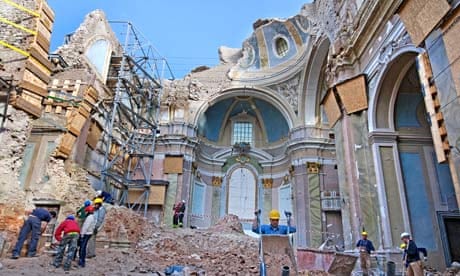In the aftermath of the Referendum I wondered where the
Church’s responsibility lay in responding to the deep division of British
society revealed by the vote, something which seems to have drifted into the
background over the Summer. It might be fruitful to think about ways of interpreting
that society to itself, I thought. The other day I spoke to my American Goth
accountant friend Ms DeathAndTaxes who swore angrily on Facebook the day after
the vote that she’d disavow anyone she knew who’d voted Leave (which made me
feel a bit uncomfortable as I only decided not to with a few days to go). In
the meantime she’d been to an event in a small town in Gloucestershire and,
looking around at a social milieu utterly separate from cosmopolitan, diverse
London which she inhabits most of the rest of the time, ended up feeling
differently, and more understanding. But there are deeper things that need
tackling. What are the radical motors of social change that have brought us to
where we are, and where might they be taking us next? Do we want to go there,
or to choose something else? I thought about running a series of talks in the
church from people who might have interesting things to say about where society
is from specific points of view. But we’re not a town-centre church, just a
suburb that thinks it’s a village, at whose railway station people stumble
blearily off trains and totter home for a few hours before going out to do it
all again. They may not feel very much like coming to evening talks.
More basically, I struggle to find a point of connection
between my own lingering radical instincts and the prophetic role the Church is
called to take on. It’s all too easy for Church life to be a matter of tea and
cake, I thought at the Rectory garden party for new members of the congregation
on Saturday, comfortable, decent, meekly falling in line with the world as it
is. Where’s the grit in the oyster, the points of disagreement, the jagged
edges?
I think – have thought for years – that they probably lie thickest around our modern relationship with work. Although as we all know productivity
in Britain
is woefully low compared with many other countries, work is the great fact of
our lives around which everything else is adapted to fit. Most of us travel
considerable distances to work and our home and work lives are sharply
disconnected, so the transportation system has to be structured to accommodate commuting.
Much of the work we do, therefore, isn’t about serving the community we belong
to, and doesn’t contribute towards the development of human relationships. It’s
a means of producing money which, we are promised, we can then use to pursue
the things we really want to do. But so much of that is now consumed by travel
and housing costs, and we have so little time and energy left over, and the
community life within which we once used to pursue our desires is now so
etiolated, that that promise rings a bit hollow. If we are parents we defer the
fulfilment of the promise to our children: they are the ones who will reap the
benefit of our hard work even if we don’t. Of course this is a fiction too,
because when their time comes, they will be sold exactly the same bargain. We all know that for the most part our work is deeply unfulfilling, and so there is a minor industry devoted to convincing us that this is not the case, and employees who really do treat photocopying as though it bears deep social significance are given (equally meaningless) rewards. It’s
Vanity Fair, brethren, and it's appropriate to think about these things on the day
the Church remembers John Bunyan.
Of course someone benefits from this. The money goes
somewhere. We are all working to support something and somebody, and you might
question who it is, and the specious ideology of competition which justifies
the whole thing and keeps human beings soaked in anxiety from their school days
to their care homes. Yet it seems hidden, the complexities of the structure
obscuring what is actually happening. Dr Johnson said a man is scarcely more
innocently employed than in making money, and the Doctor is always right; but
his society was not ideologically structured around work in the way ours seems
to be. He was himself, after all, a profound practitioner of the art of idling
about, and the benefits that flowed from it.
Being a priest (as I’ve said before) I don’t really work and
am not really paid, so I’m not part of this business directly. More abstractly,
the Church by its mere existence and doggedly insisting on carrying on the
sacramental life of the coming Kingdom points to a separate scale of worth and
values. But is it really enough for us simply to signpost the things of the
Spirit and expect that to have any kind of effect, without pointing out the
truth? That this is a society telling itself lies, devoting itself to idols,
worshipping at high-places and Asherah poles? And when might we find it
incumbent on us actually to ‘break the images in pieces, and cut down the
groves, and fill their places with the bones of men’?


















